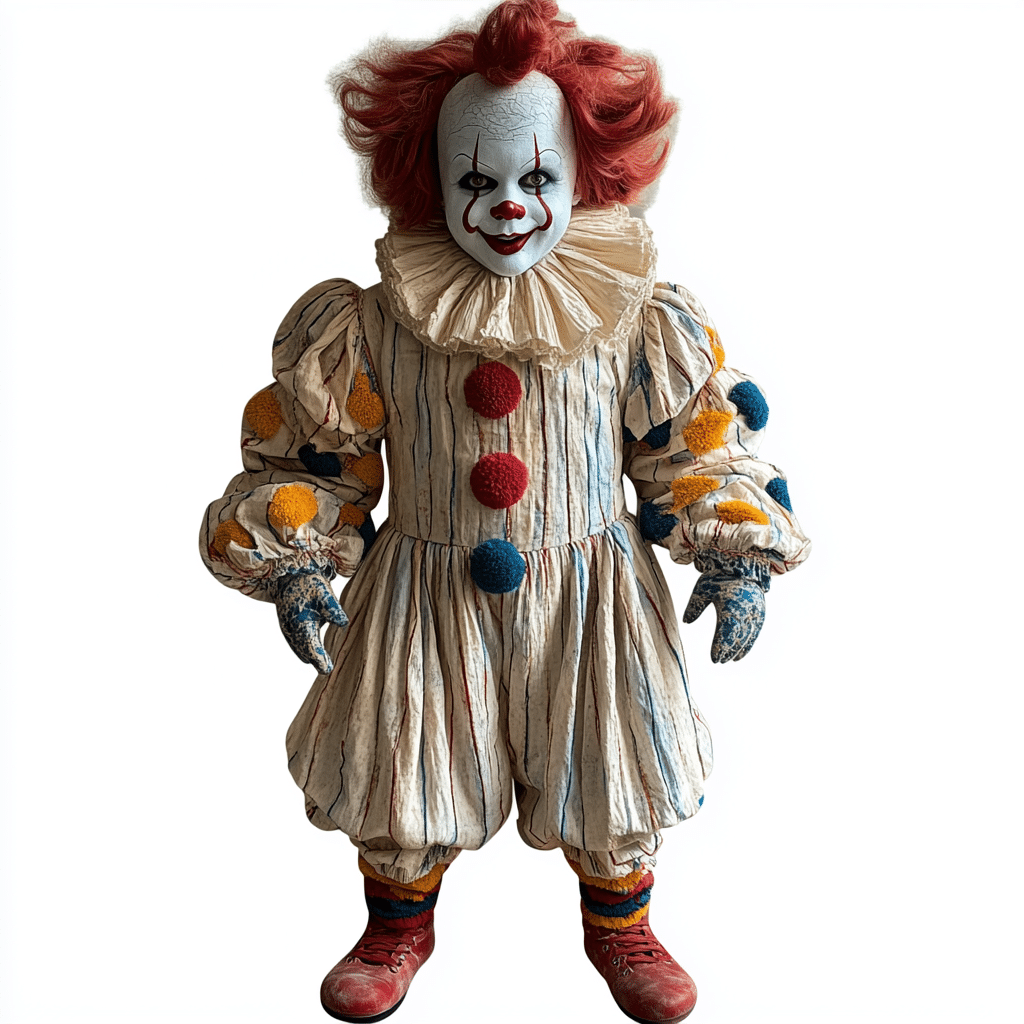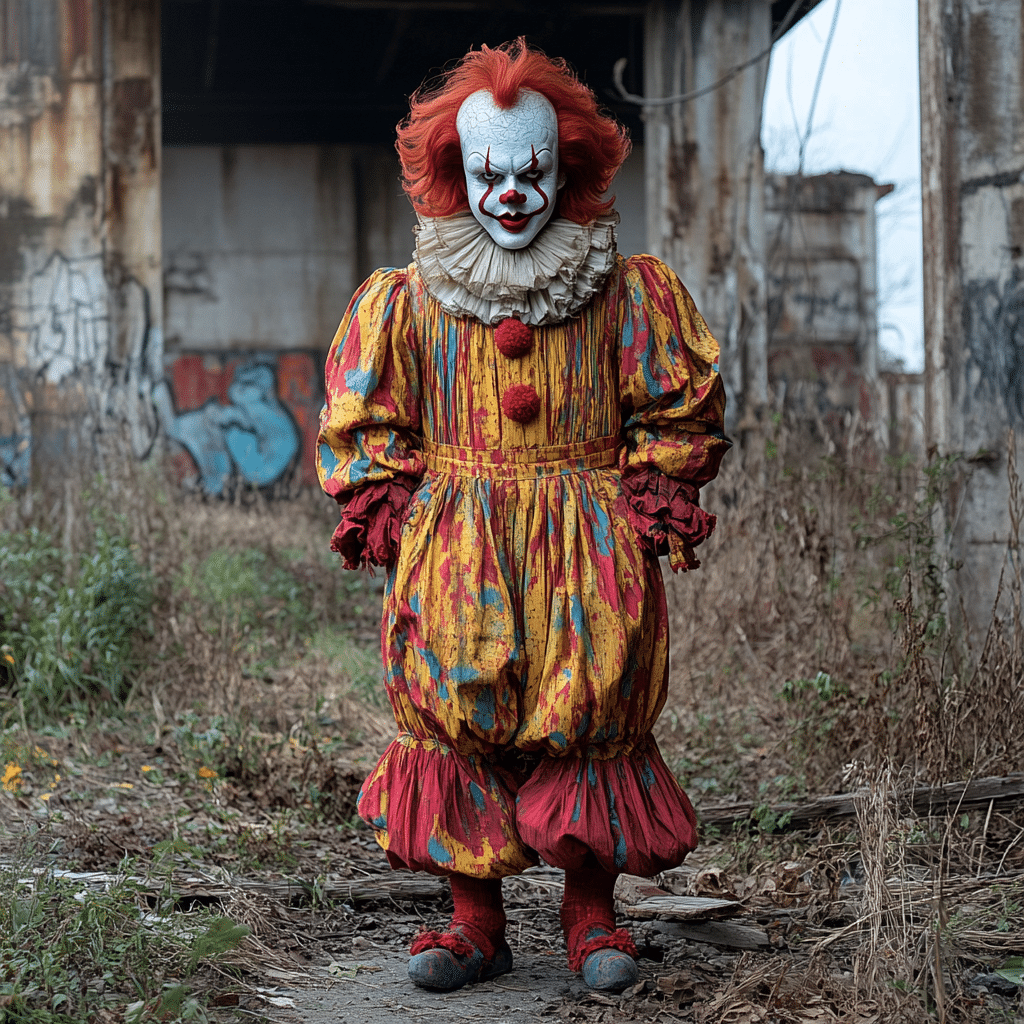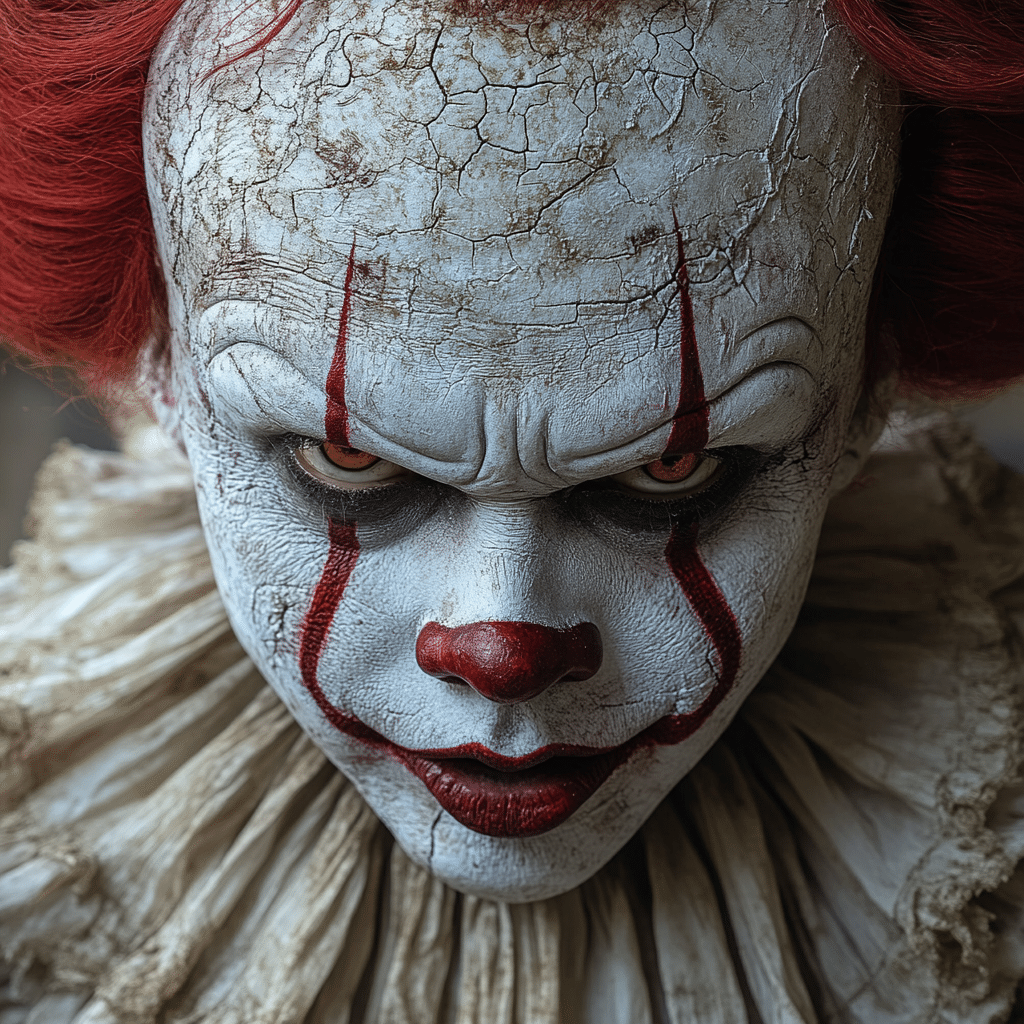Clowns, those playful entertainers adored by children, hold an unexpectedly dark fascination as the scary clown costume permeates pop culture. Over the last few decades, the perception of clowns has transformed, morphing from harmless fun to figures that instill terror. The combination of childhood innocence alongside sinister imagery creates a compelling juxtaposition, making the scary clown costume both intriguing and terrifying for people of all ages. In this article, we’ll explore the origins of this phenomenon, highlight some frighteningly popular clown costumes, and discuss the emotional and psychological impact these characters leave on us.
Exploring the Scary Clown Costume: A Cultural Icon
The scary clown costume has roots steeped in our cultural history. Traditionally, clowns aimed to evoke joy through humor and playful antics. However, this role has been overshadowed by darker connotations, particularly following the horrifying acts of infamous figures like John Wayne Gacy. Gacy, often referred to as “Pogo the Clown,” is infamous for his heinous crimes in the 1970s, killing 33 young men and boys. This tragic chapter in history arguably marks the onset of a societal shift shape our understanding of clowns, cementing the scary clown costume as a cultural icon.
The recent years have witnessed a surge in entertainment portraying clowns with a malevolent edge. Movies, television shows, and even local haunted attractions have capitalized on our fascination and fear of clowns, prompting artists, designers, and cosplayers to create new interpretations of these unsettling characters. A popular psychological concept known as “the uncanny” aptly explains our discomfort with clowns; they look familiar, yet their exaggerated features and hidden emotions create an unsettling experience. The scary clown costume becomes a canvas for exploring this blend of innocence and horror.
Top 7 Scary Clown Costumes That Keep Us Up at Night

The Emotional Impact and Psychological Effects of Scary Clown Costumes
The emotional resonance of the scary clown costume can be attributed to the psychological effects that often accompany these characters. Clowns, figures typically associated with laughter and joy, become menacing when their appearance is grotesquely altered. This stark contrast taps into our primal fear of the unknown. Research highlights the phenomenon known as coulrophobia—the irrational fear of clowns—demonstrating how these jesters embody both delight and dread.
The unsettling realization that the face paint obscures true emotions compounds the anxiety associated with clowns. Viewers struggle to decipher whether these figures are benevolent or malevolent. Introducing elements like exaggerated movement also fosters a disconcerting viewing experience. The scary clown costume stands as a metaphor for emotional ambiguity, prompting reflection on childhood memories and the loss of innocence.
Innovations and Trends in Scary Clown Costumes
Recent trends in the scary clown costume arena reveal several innovative twists, especially with advancements in costume design. Designers incorporate technology into costumes, such as LED lights and sound effects, intensifying the eeriness of wearers. Leading costume retailers like Spirit Halloween and Party City are selling customizable options, allowing individuals to curate their own terrifying looks.
Moreover, incorporating bold fabrics and intricate makeup techniques elevates the realism of these costumes. For instance, the terrifying white base paired with red accents has become a hallmark of many modern scary clown costumes. Whether it’s a classic Pennywise look or a contemporary spin on Bozo, costume design continues to expand to keep audiences entertained and terrified.

Wrapping Up the Scary Clown Phenomenon
The intrigue surrounding the scary clown costume represents more than a flashy Halloween trend; it’s a reflection of our society’s complex relationship with fear and nostalgia. As we continue to explore artistic interpretations, the scary clown remains an enduring symbol that merges laughter with unease. With Halloween just around the corner, expect to see many interpretations of the scary clown costume, ensuring this cultural phenomenon is here to stay.
As our understanding and emotional connection to these masks evolve, the scary clown costume will undoubtedly linger in our collective imagination for generations.
Scary Clown Costume: A Frightening Fashion Statement
The Evolution of Fear
The scary clown costume has been a pop culture staple for many years, stirring a fascinating mix of intrigue and fear. While clowns were once symbols of joy and laughter, particularly in family-oriented shows, they took a sinister turn in the late 20th century. The infamous “It” character created by Stephen King played a pivotal role in shifting perceptions. Interestingly, this fear of clowns has a name—coulrophobia! Amidst this backdrop, it’s worth noting that some folks have embraced their fear; people even take out loans with a cosigner just to purchase elaborate costumes or haunted attractions!
Let’s Get Weird
But what makes clowns so scary? Is it their exaggerated features or the unpredictable nature they embody? Studies reveal that while some viewers blanket the scary clown costume with a sense of nostalgia, others can’t shake the spine-chilling vibe. Take, for example, the phenomenon of horror events—like the Santos Laguna Vs Toluca match that had fans sporting spooky attire in a show of spirit. It reflects an interesting intersection of sports and fright, proving that even at lively events, the eerie allure of clowns can find a way to crawl into the spotlight!
The Global Circus
From circus acts all around the globe to films that keep you up at night, scary clowns have gone international! Countries like Japan and Mexico each have their own spooky renditions. Speaking of international, the Red Bull advent calendar is a fun twist for thrill-seekers who enjoy surprises paired with their adrenaline. Meanwhile, cities like Santiago de Querétaro showcase Halloween festivities that often feature vibrant yet terrifying clown characters, merging cultural festivities with a healthy dose of fear.
Outlandish Inspiration
Interestingly, the rise in popularity of scary clowns often coexists with real-life figures. For instance, Sarah Koenigs work delves into the minds behind traumatic events, invoking curiosity and sometimes fear, mimicking the uneasy excitement of a scary clown costume. Similarly, figures like Natthakritta Vongtaveelap capture the public’s imagination, showcasing that fear can translate into various mediums, from sports outfits to high-stakes discussions about societal issues, much like the arthrodesis status does for health discussions.
So whether you’re dressing up for a frightful event or simply enjoy the eerie aesthetic, the scary clown costume remains a captivating topic that transcends cultures, ages, and even personal fears. It’s a testament to humankind’s complex relationship with fear, fascination, and fun!

How to make a clown look scary?
To make a clown look scary, use a soft white base for the face with red line work and a little red nose. Keeping the white on the upper eyelids will really make them stand out. You can also add some red streaks in the hair and wear red earrings or accessories for that complete creepy vibe.
Who is the scariest killer clown?
John Wayne Gacy is considered the scariest killer clown, having murdered 33 boys and young men in the Chicagoland area during the 1970s. His persona as “Pogo the Clown” has heavily influenced the modern image of evil clowns.
What are the different types of clowns suits?
There are three major types of clown suits recognized in competitions: Whiteface, Auguste, and Tramp, with a fourth category for character clowns in costume contests. There are other clown types too, but they aren’t included in the official competitions.
Why do I find clowns scary?
People often find clowns scary because their painted faces mask real emotions, creating a sense of unease. This is tied to a psychological phenomenon called ‘the uncanny,’ where familiar things become unsettling when they’re just a bit off.
What makes a clown creepy?
A clown can seem creepy due to exaggerated movements, strange facial expressions, and the overall mismatch between their silly costumes and potentially sinister implications. These elements can create a disturbing contrast that unsettles many people.
How do you dress like a clown at home?
To dress like a clown at home, grab some colorful clothing, a wig or accessories for your hair, and paint your face with bright colors. Don’t forget to add oversized shoes or props for that classic clown look.
What is a fear of clowns called?
The fear of clowns is known as coulrophobia. It’s a common phobia that affects many people, making them feel anxious or scared around clowns.
What kind of demon is the clown?
Clowns are often considered as demons or harbingers of fear in pop culture, particularly in horror films. They’re depicted as entities that use humor to disguise their sinister intentions.
When did clowns become creepy?
Clowns started to become creepy in the late 20th century, especially with the rise of horror films and real-life figures like John Wayne Gacy, which painted a darker picture of clowns in the public’s mind.
What type of clown is Pennywise?
Pennywise, from Stephen King’s “It,” is categorized as an Auguste clown, known for its silly yet frightening demeanor that embodies a twisted form of fun.
What is a sad clown called?
A sad clown is often referred to as a ‘sad sack’ or a ‘tragic clown.’ This character plays on the contrast between joy and sorrow, often reflecting deeper emotional themes.
Why do clowns have big red noses?
Clowns typically have big red noses to enhance their character and create a humorous look. The exaggerated features help to emphasize their playful and silly nature, even if it can also come off as creepy.
Why do I cry when I see clowns?
Crying when seeing clowns might stem from an emotional response to their artificial expressions or the contrast between their playful demeanor and underlying fear. It’s a common reaction linked to their uncanny nature.
What is the rarest phobia?
The rarest phobia is technically debatable, but one contender is “anthophobia,” the fear of flowers. It’s not often discussed, making it quite unusual compared to other more common phobias.
Do clowns still exist?
Yes, clowns still exist and perform at various events, parties, and festivals around the world. Despite the fear they can evoke, many people still enjoy clown entertainment.
How to make a scary looking character?
To create a scary-looking character, focus on dramatic makeup, unusual colors, and exaggerated expressions. Use props like fake weapons or detailed costumes that amplify the eerie vibe you’re going for.
What is a creepy clown?
A creepy clown is typically characterized by a sinister grin, unsettling movements, and dark undertones in their performance or appearance. They often play into fears associated with traditional clown figures.
How do I act more scary?
To act more scary, deepen your voice, use slow and deliberate movements, and maintain an unsettling gaze. Adding unpredictable gestures can also keep others on edge and heighten the fear factor.
How do you make up like a clown?
For clown makeup, start with a white base, then add bold colors for eyes and mouth. Use black for heavy outlines or sharp features, and remember to exaggerate your expressions to create a more dramatic effect.



